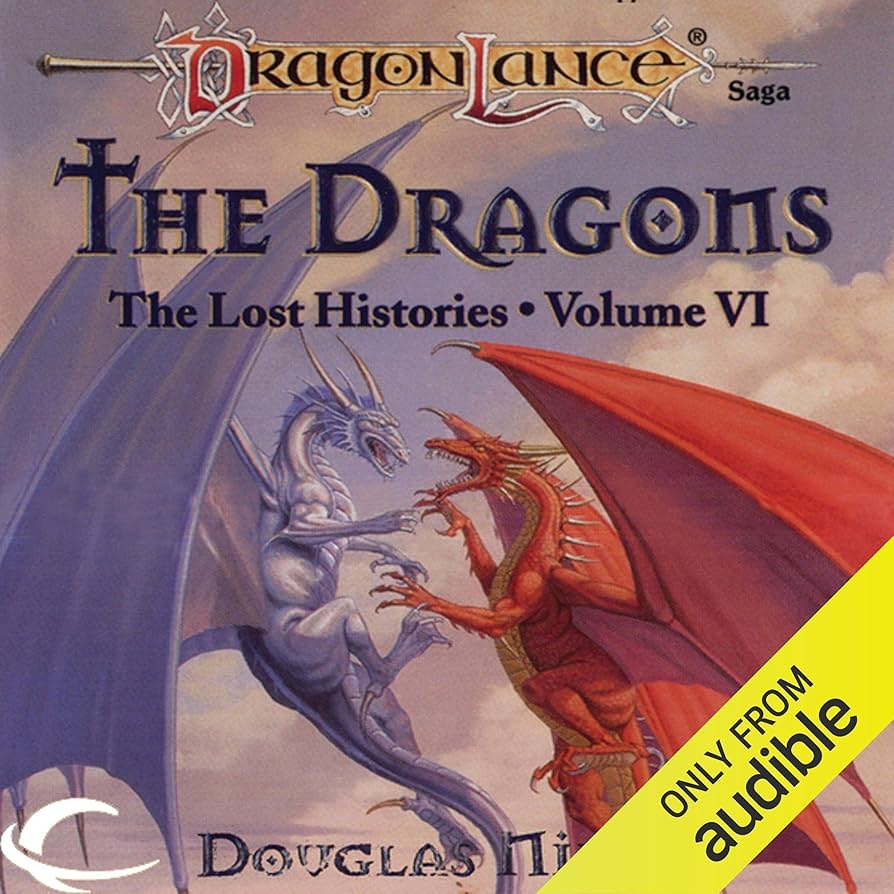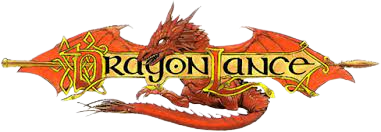The Dragons

Table of Contents
ToggleOverview
The Dragons is a novel unlike any other in the Dragonlance saga. Rather than focusing on knights, mages, or elves, it traces the ancient, mythic history of dragonkind—both chromatic (evil) and metallic (good)—from their earliest roles as servants of gods, to their slumber through the Ages, and finally to their reawakening and impact on the War of the Lance.
This is a generational epic told through the eyes of dragons themselves, painting them not as background threats or magical beasts, but as sentient, powerful, and emotionally complex characters with their own societies, feuds, losses, and loyalties.
Central Dragon Characters
Rather than a single protagonist, The Dragons follows several dragons across different eras:
Aurican – A majestic gold dragon who serves as a spiritual and moral core to the story. Wise and contemplative, Aurican reflects the hopes of the metallic dragons.
Darlantan – A noble silver dragon who struggles with grief, memory, and the fading past. His journey is one of reconnection and purpose.
Cryonisis – A powerful white dragon representing cold, ruthless instinct. She embodies the chaotic nature of chromatic dragons.
Galadaeros – A bronze dragon who grows from youth to leadership, deeply affected by his time among humans and the war that reshapes his worldview.
Targonne and Grath – Examples of chromatic dragons locked in internal rivalries, power games, and divine manipulation—highlighting the darker side of dragonkind.
Structure & Setting
The novel spans thousands of years, moving through major eras of Krynn’s history:
- The Age of Dreams – When dragons were first created by the gods Paladine and Takhisis to serve as their champions in the world.
- The First Dragon Wars – The brutal magical conflicts between metallic and chromatic dragons, which leave a deep psychic and physical scar on the world.
- The Cataclysm and the Long Sleep – Dragons vanish from the world, entering an extended magical slumber, tied to divine treaties and oaths.
- The Age of Despair – Dragons slowly awaken—confused, fractured, and haunted by the passage of time—and begin to shape the events leading up to the War of the Lance.
The book culminates in the return of dragons to the world stage, just before the events of Dragons of Autumn Twilight, bridging ancient myth to modern crisis.
Plot Summary
The Creation and Betrayal
In the early ages, dragons are created by the gods as instruments of cosmic balance—but soon become tools of divine rivalry. Takhisis corrupts many dragons, turning them into chromatic beasts of conquest, while Paladine grants wisdom and purpose to the metallic dragons.
The First Dragon War erupts—a magical and brutal conflict of godlike scale. Dragons war not just with each other, but with their very purpose.
The dragons’ oaths—particularly the agreement to withdraw from mortal affairs—are imposed to end this devastation. This begins the Long Sleep.
The Slumber and Awakening
For centuries, dragons lie dormant, hidden from the world. But their dreams are filled with regret, rage, and prophecy.
When Takhisis manipulates the world to return, her dragons begin to stir—but so do the metallics. Awakened in a changed world, the dragons must decide whether to follow old paths or forge new destinies.
Some, like Aurican and Galadaeros, seek to guide mortals and rediscover honor.
Others, like Cryonisis and Targonne, prepare for domination and revenge.
The Rising Storm
As the War of the Lance approaches, the dragons re-enter the world stage—not all aligned, not all certain. The novel ends with the dragons flying once more across Krynn—not as tools of gods, but as forces of fate, each carrying the weight of millennia.
Themes
- Legacy and Memory – Dragons carry the full weight of the world’s history in their minds. The novel explores how time erodes purpose and how memory shapes morality.
- Divine Manipulation – The gods use dragons as avatars of power—but what happens when dragons reject their creators?
- The Cost of War – Unlike many tales where dragons are weapons, here they are also victims of ancient wars that destroyed their kind and their peace.
- Identity and Evolution – Dragons in this story ask: Are we who we were created to be—or something more?
- Balance Between Races – The novel shows how dragons view humans, elves, and other races—as fleeting, sometimes frustrating, but capable of great courage and change.
Tone & Style
- Epic, lyrical, and mythic, with sweeping narration that mirrors the scale of the beings it follows.
- Rich in description, reflection, and emotional resonance—less action-heavy, more focused on character, memory, and the passage of ages.
- Has the tone of an epic poem or sacred text, telling a story of gods and giants, rather than adventurers and dungeons.
Reception
The Dragons is praised for:
- Being the most comprehensive and respectful portrayal of dragons in the entire Dragonlance setting.
- Delivering a deeply moving and philosophical look at beings often treated as mere enemies or set pieces.
- Tying thousands of years of lore together, acting as a mythological anchor for the saga.
Some critiques:
- Slower pacing and lack of a single central plotline may challenge readers looking for a more traditional adventure structure.
- Dense at times, and best appreciated by those already familiar with Krynn’s history and mythos.
Final Thoughts
The Dragons is a reverent, majestic, and beautifully melancholic ode to the greatest beings in the Dragonlance universe. It’s not a tale of fire and conquest, but of loss, awakening, and the burden of immortality.
Recommended for:
- Longtime Dragonlance readers seeking deep lore and emotional resonance
- Fans of dragons who want more than just “monster battles”
- Readers who enjoy mythic storytelling, interwoven timelines, and cultural sagas
“The dragons slept. But the world did not forget. Nor did they.”
